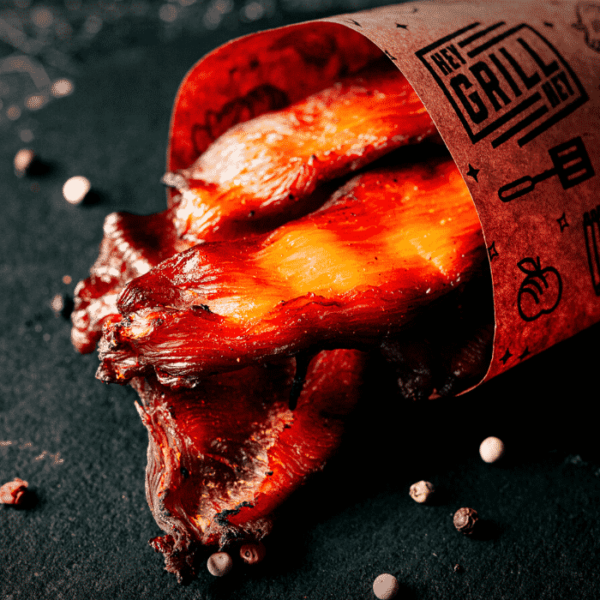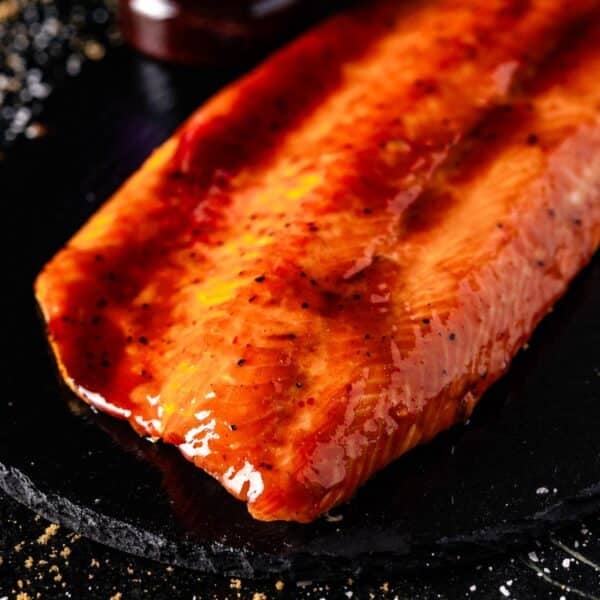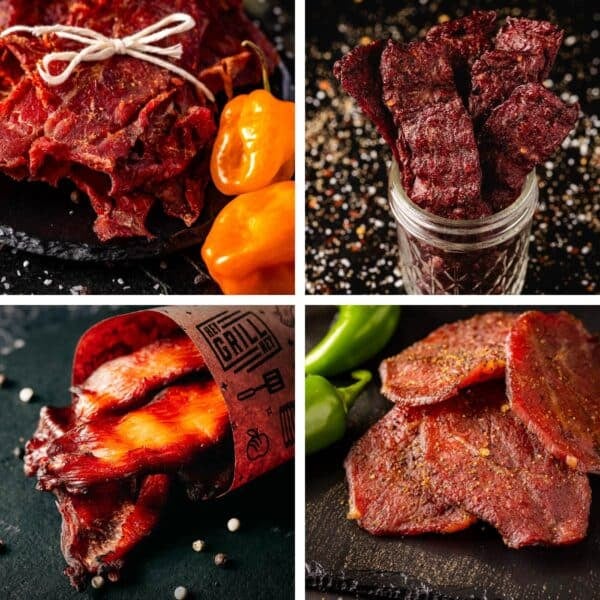Steak Cuts 101
On September 19, 2024
This post may contain affiliate links. Please read our disclosure policy.
Choosing the right steak cut doesn’t have to be a mystery. Let me show you the right steak cuts for the job without breaking your budget.
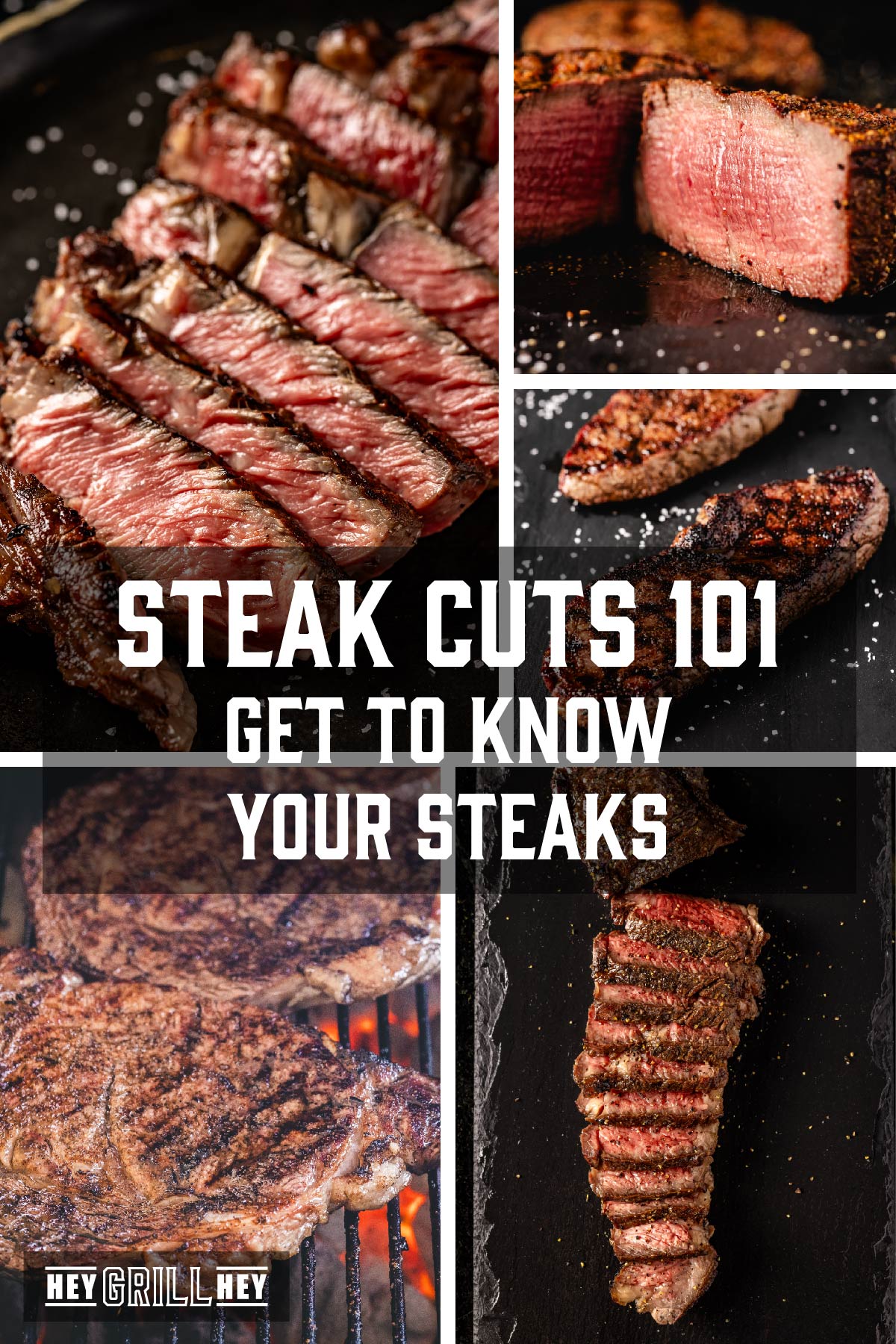
Steak Cuts 101
Walking up to the butcher counter at the grocery store can feel a little bit overwhelming when you see the massive assortment of meats. I’ll guide you through the best steak cuts for grilling, slicing, smoking, and some of my favorite, slightly obscure cuts that are great for both flavor and price.
Grades of Beef
- Prime. This grade has more fat marbling which means more flavor and juiciness than other grades. You might need to go to a specialty store to find a prime steak, and it’ll cost you a pretty penny as well.
- Choice. This is a solid mid-grade option and is higher-end for most grocery store butchers. It’s pricier than Select, but the meat is of a better quality.
- Select. This grade contains the least amount of fat and marbling. This steak will be the most common in grocery stores. It’s the least tender, but it will be the most affordable.
If it’s a special occasion and you want a really nice cut of beef, you’re probably going to spring for something labeled Prime because you’ll want that fat and that flavor. For most everyday steaks, Choice is fantastic. And if you’re on a budget, you can look for Select grade beef. Just remember that fat equals flavor so the higher the grade, the greater the flavor.
Labels
Now, let’s talk about what you’re going to see on labels. Grades for conventional raised US beef tell you how much fat is in the meat itself.
Grading is based on a small sample from the rib portion of the cow, then used to grade the entire carcass. No matter what the cut is, it’s all determined based on that one piece, so marbling can vary from cut to cut as well as cow to cow.
Types of Cattle
Another thing to keep in mind is the varieties of the cattle themselves. Some specific species to keep in mind are:
- Certified Angus Beef. Angus beef is a breed of cattle and it is marketed as its own grade. It’s often marketed as better than Prime.
- Wagyu. This is a delicious American crossbreed with Japanese Kobe cattle. Bred for incredible marbling and buttery soft flavor, these cows offer top-of-the-line cuts of beef and some of the most expensive cuts available.
These varieties fall outside of the conventional grading structure and can have different effects on the flavor and fat marbling. There are also a few other varieties that your grocer or butcher could offer that exist outside of that traditional Prime, Choice, and Select framework. Those include:
- Grass fed, for example, doesn’t necessarily have to fall under the same grading criteria that conventionally raised beef does. some grass-fed steak has great marbling, where some is really lean. Typically though, grass fed beef is pretty lean so keep that in mind.
- Aged beef is offered by some butchers and grocery stores and can either be dry aged or wet aged. Aging beef is a process that means your beef is sitting at a specific temperature and humidity point for an extended period of time. It starts to break down the meat which helps it become more tender and develop a specific flavor. Because this process takes a while, you’ll likely be charged extra for it. It’s definitely a fancier option.
All that to say the grading structure exists, it can be helpful, but at the end of the day, your eyeballs are really your best friend when it comes to picking a steak that’s full of flavor.
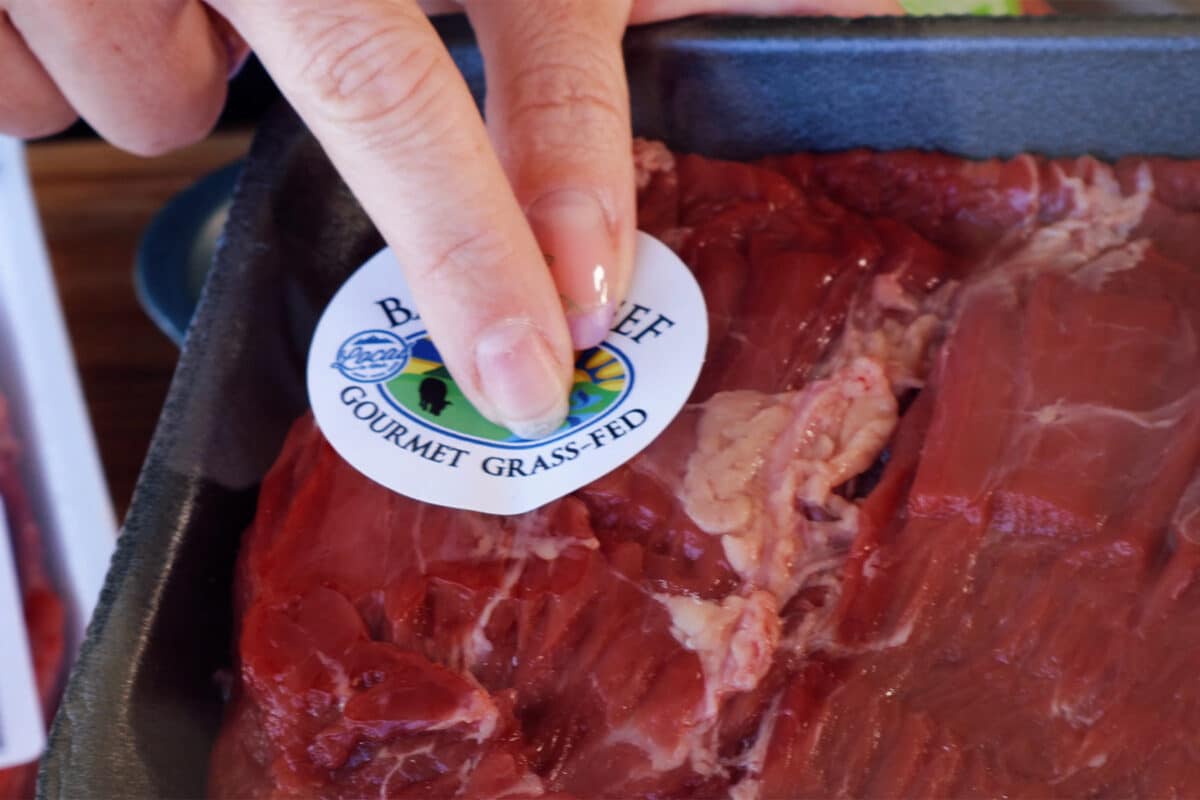
Using Your Eyes
Some Choice-grade steaks have rich marbling, while others may contain much less fat. This comes down to the cut as well. Keep in mind that grade doesn’t necessarily mean that it’s going to have the same amount of fat in every piece of steak. Knowing the right cuts is crucial to making sure you get the final texture and flavor that you want, and that’s what we’re going to cover next.
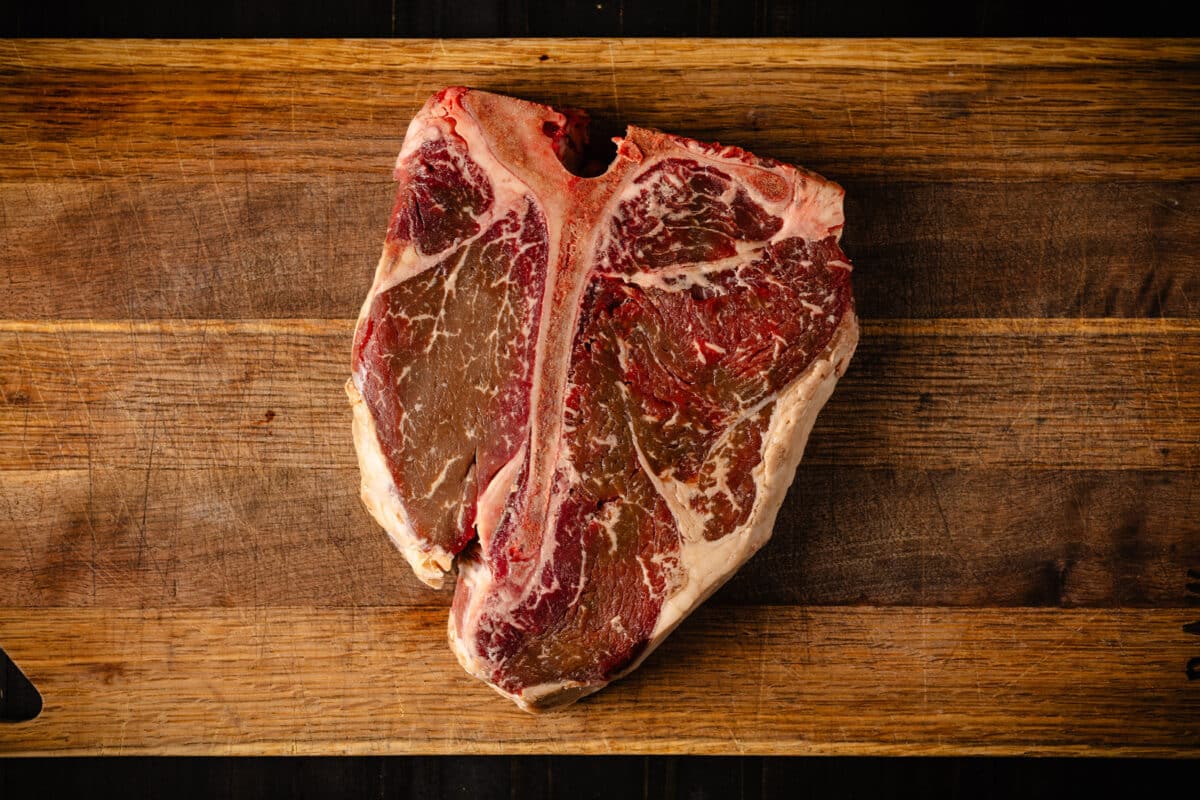
Steakhouse Steak Cuts
First we have what I call the steakhouse cuts. These are what you’ll typically see on the menu of a typical steakhouse.
- Sirloin steak is leaner, slightly tougher, and less flavorful, but it’s typically the cheapest. However, when prepared simply like this, it’s sure to please.
- New York Strip is a great grilling steak, beautiful when seasoned lightly and cooked to medium rare. It has a great texture and taste but it’s not tough. If you’re looking for the perfect way to cook it, this recipe will do the trick.
- Filet is probably one that you’re already familiar with. The filet mignon or the tenderloin filet is really tender. It melts in your mouth but is pretty lean.
- Ribeye steak is my favorite cut and I consider it the king of steaks. It’s well marbled, has a ton of flavor, and cooks beautifully on the grill. It doesn’t need a lot in terms of seasoning and is fantastic cooked to a medium-rare. I’ve found the reverse sear to be an excellent cooking method for this cut.
- T-bone / Porterhouse steaks offer both a New York Strip and a Filet in one cut. The T-bone is typically the smaller end so you’ll have a very small portion of a filet. The porterhouse is where you have a really large portion of the filet. I think this is a two person steak. Here you can find a recipe for one prepared with garlic and thyme.
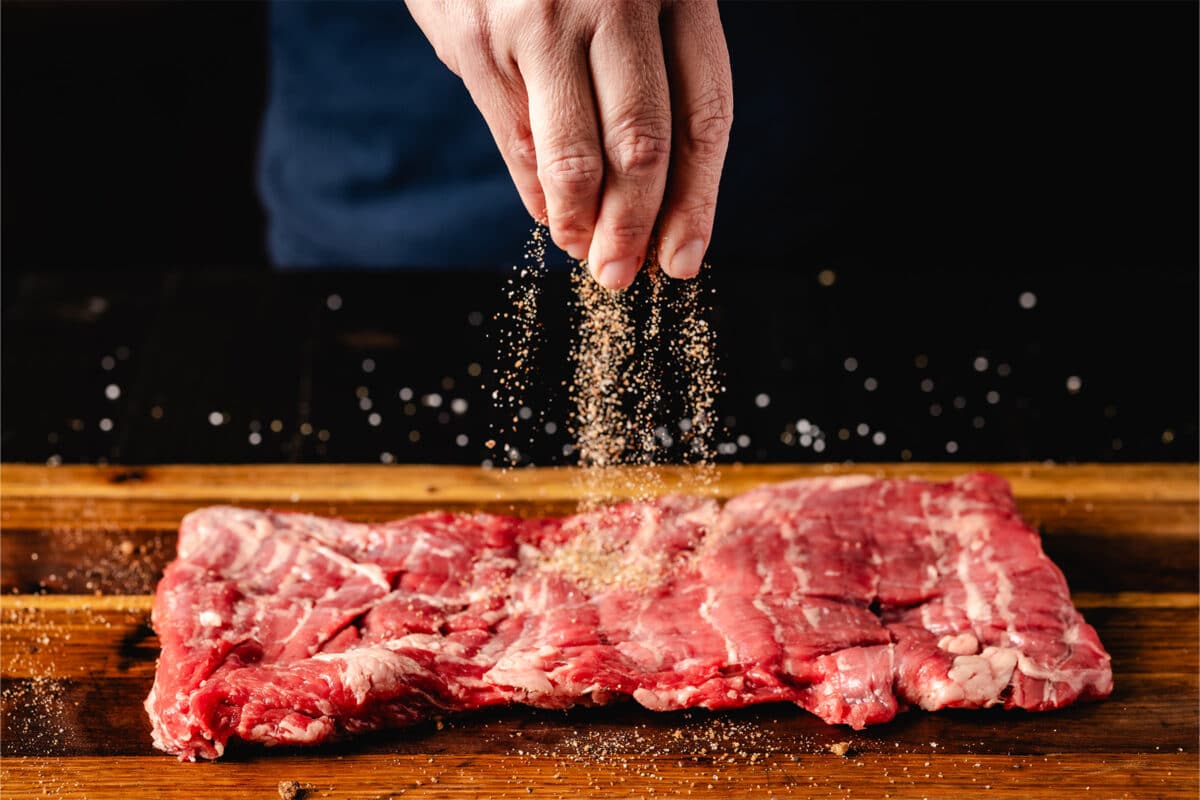
Family-Style Steak Cuts
Next up are what I call the family-style steaks. They tend to be more lean and a little bit tough, so a marinade can really help infuse them with flavor and break down some of that tight, tough texture.
- Top Round is a very lean cut of beef taken from the round portion of the cow (the rump and upper thigh areas) resulting in a tender and flavorful cut of beef. Try this one on the smoker and thank me later.
- Top Sirloin steak is a lean, thick cut that that cooks wonderfully with marinades. It also tends to be on the more affordable side which makes it ideal for a family steak night.
- Skirt Steak is a cheaper cut of beef compared to more popular cuts like the New York strip or ribeye. However, one of these steaks can feed an entire family, providing a bit more bang for your buck.
- Flank Steak is a long and thin cut of meat taken from the lower chest or abdomen of the steer. Because it is a well-used muscle, it can often be a bit tough. Cooking this steak correctly (over high heat) helps to ensure that your meat comes out tender and moist. Prepare this with pineapple salsa and slice it up (against the grain!) for a backyard party hit!
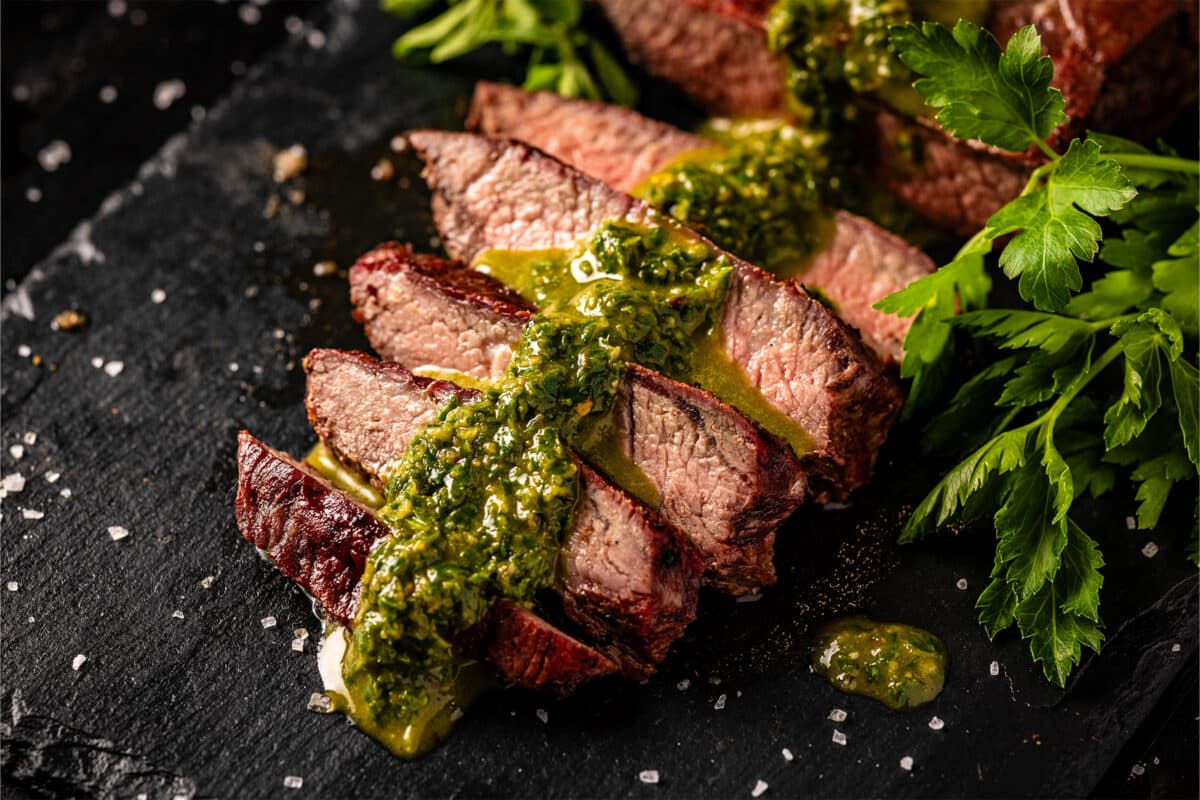
Off-the-Wall Steak Cuts
Finally, let’s talk about some off the wall cuts. These are ones that you’re not gonna see in the center rack of your butcher counter. You’ll usually find them up above the steakhouse cuts in the middle. They also tend to be more affordable.
- Flat Iron Steak works more like a family steak instead of a personal steak but it’s a little bit more obscure. It has really fantastic fat, marbling, texture, and flavor at a really affordable price per pound. This recipe of Flat Iron Steak with chimichurri is absolutely delicious.
- Denver Steak works beautifully when seasoned simply with salt and pepper and then sliced thin. It can work as an individual steak cooked to medium rare but there aren’t a lot of these per cow so you’re not going to see them sliced and served as conventionally as flat iron steaks. When you find one, grab it and give it a try. The fat and flavor in this cut is fantastic.
- Tri-tip Steak is cut from the more familiar tri-tip roast into an individual steak. It’s actually one of the most affordable cuts per pound out of the entire steak category, including the sirloin. They have fantastic flavor when grilled to a medium rare and marinated with red wine.
Where to go from here
Now I know there’s no way for me to take you through every single steak at your grocery store or butcher counter, but I think this is a good introduction to what you’ll typically see in terms of the steakhouse, family-style, and some off the wall cuts that you can look for.
There are plenty of recipes on the site and app for all kinds of cuts that include instructions for marinades or cooking methods that’ll help you make the perfect steak at home even if it’s your first time.
When you decide to give your chosen cut a chance, be sure to tell us how it went and tag us @heygrillhey on Instagram and Facebook! You can also check out the video that inspired this post right here:
If you want to go even more in depth and actually come with me to the grocery store, look at the meat counter, make your different meat selections, and learn a lot more about different cuts of steak, check out the Grill Squad. It’s an exclusive online community and bbq school where I teach you everything that you need to know. There, you can find two videos; one fully covering steak cuts, and another on meat buying. These will help you be a more educated and better consumer at the grocery store.


